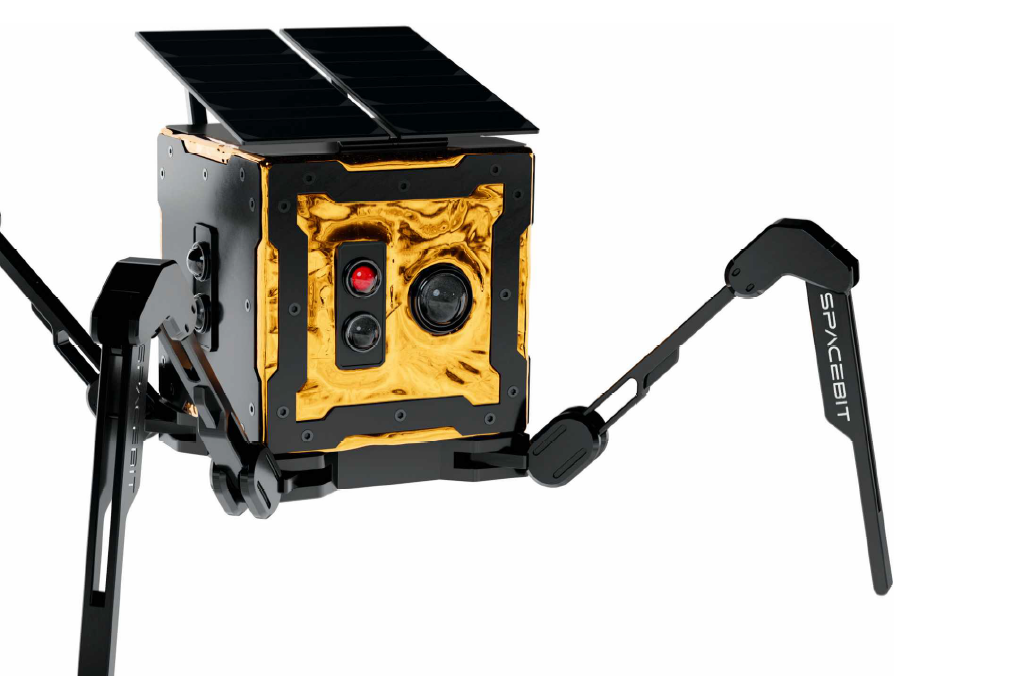
Exploring New Horizons
In the world of space exploration we have grown accustomed, to the sight of rovers diligently traversing the lit regions of celestial bodies like the Moon and Mars. They rely on the sunlight that fuels their missions. However as humanity’s attention shifts towards challenging terrains there arises a need for innovative robotic explorers. These darker and shadowy corners of our neighboring bodies hold both mysteries and opportunities.
The Mysterious Lunar South Pole
At the south pole lie craters that remain perpetually hidden from the Suns rays shrouded in darkness. These intriguing lunar craters offer a tantalizing possibility for water ice to persist in coldness. The discovery of water would be a game changer for lunar expeditions as it could serve as a vital resource to sustain potential lunar colonies.
Martian Cave Systems: Shelters from Radiation
Even Mars conceals secrets beneath its surface. Vast cave systems, created by processes provide potential shelters from the planets harsh surface conditions, including harmful radiation exposure. These mysterious caves may harbor microorganisms. Could one day act as environments for human explorers.
Redefining Robotic Exploration
Stepping into these domains calls for a perspective, on robotic exploration. Conventional rovers, which have been used to explore the Moon and Mars in the past are not suitable, for the unknown terrain found in craters and Martian cave systems. However there is a breed of explorers that are specifically designed for navigating these challenging landscapes.
Arachnid-Inspired Robotic Scuttlers
Inspired by arachnids legged robots have fascinated scientists since the days of space exploration. Now thanks to advancements these robotic explorers are becoming a reality. One such example is the Asagumo rover developed by Spacebit, a UK based company. This spider like “Scuttler” is expected to make its debut on the surface in the year showcasing how legged robots can overcome the unique challenges of exploring our moon.
Autonomy: The Key to Success
Autonomy plays a role in exploring lunar craters and Martian caves due to limited real time communication with Earth. Given the time delay between these destinations and our home planet direct human control becomes impractical. To address this issue NASAs Jet Propulsion Laboratory’s BRAILLE team is, at the forefront of developing robo explorers.
The Autonomous Revolution
The robo explorers developed by BRAILLE rely on NeBula autonomy software, which gives them the ability to navigate environments and adapt to situations, on their own. A recent simulated mission took place at Lava Beds National Monument in California showcasing the potential of this software. A team of SPOT robots from Boston Dynamics embarked on an expedition with each robot having a role.
Mapping the Uncharted
The robot in the SPOT trio was equipped with LiDAR technology, which is used to create detailed maps of intricate tunnels and identify interesting points within cave systems. This initial scout played a role in the mission by identifying areas exploring and ensuring that the teams objectives were met.
Collecting Samples and Analyzing Data
The second explorer in the team ventured closer to these identified points of interest. It was designed to collect samples from cave walls adding an element to the mission. By swabbing these surfaces this robot gathered data that could be analyzed later.
Chemical Exploration
The third SPOT robot was operated remotely to analyze the chemical composition of the collected samples. This step is essential, for understanding the geology and potential habitability of these cave systems.
Navigating Difficult Terrain
During the simulated mission these robo explorers demonstrated their versatility by navigating challenging terrain.
They skillfully maneuvered over terrains that would stop a rover and effortlessly navigated through narrow passages that would present a significant challenge even for a human explorer.
A Glimpse of the Future: ReachBot
While the SPOT robots showcased capabilities they still encountered limitations when it came to traversing the narrowest crevices. Enter ReachBot, which is part of NASAs NIAC project. This ingenious robot utilizes boom arms equipped with manipulators at their ends allowing it to smoothly navigate through passageways. Its compact design enables multiple ReachBots to be transported together facilitating exploration. These bots can push against each other to gain leverage effectively exploring the cave systems and retrieving samples that were once inaccessible.
A Future of Collaboration
In the future we can envision an endeavor involving robots like Spacebit Asagumo, autonomous explorers, like BRAILLEs SPOT team and specialized ReachBots. Together these robots would form an exploration team poised to venture into the corners of our solar system. They could carry ReachBots on their backs ensuring exploration of every nook and cranny on the rocky surfaces of our celestial neighbors.
Conclusion
The potential, for exploration on the moon and Mars is incredibly exciting. By delving into the areas, where we may find water ice and protected habitats our understanding of these bodies could be completely transformed. With technologies and a new generation of explorers we are on the verge of making groundbreaking discoveries. The collaboration between walking robots, independent explorers and agile ReachBots paints a captivating picture of what space exploration could look like in the future. As we continue to push boundaries in our quest, for knowledge we are ready to unveil the mysteries concealed within the depths of our neighbors.
